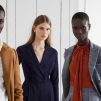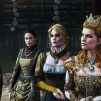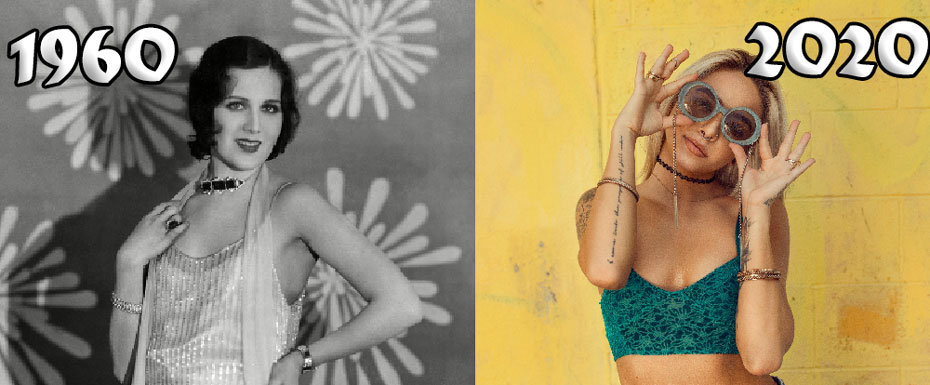
The fashion world is evolving and changing constantly, but somehow it always stays the same. Let’s talk about the evolution of fashion trends and tendencies of each era.
Fashion in the 1970s

The main feature of the 70s was diversity and eclecticism. The concept of a basic wardrobe and “anti-fashion” appeared – people could practically wear anything. In the early 70s, the presence of the 60s was still in the air – dresses with simple geometric lines and A-shaped silhouettes. At the same time, various subcultures were already beginning to spread, including hippies who chose natural materials – wool and cotton. The costumes were made of soft colors, small patterns that were typical for the ethnic style. The mini was replaced by the midi and maxi, but many continued to wear mini or classic lengths. Fashion trends were set by Kenzo Takada along with his free-cut models. Folk elements and jeans have become a symbol of rebellious American youth.
At the same time, the unisex style developed, the main attributes of which were trousers, shirts, jeans, and jumpers. Glam rock was especially bright – thanks to Gary Glitter, Mark Boan, David Bowie, leather coats, boots on a high platform or high heels, bright makeup were also in fashion.
In the 70s, extreme clothes were allowed only in the evening, but they became only more extravagant – this is the disco style. Colorful polyester shirts, lycra bodysuits, tops, short silver lurex shorts, and body art painting were fashionable. The makeup was also brilliant – glitter on the face, hair, and body.
Fashion in the 1980s
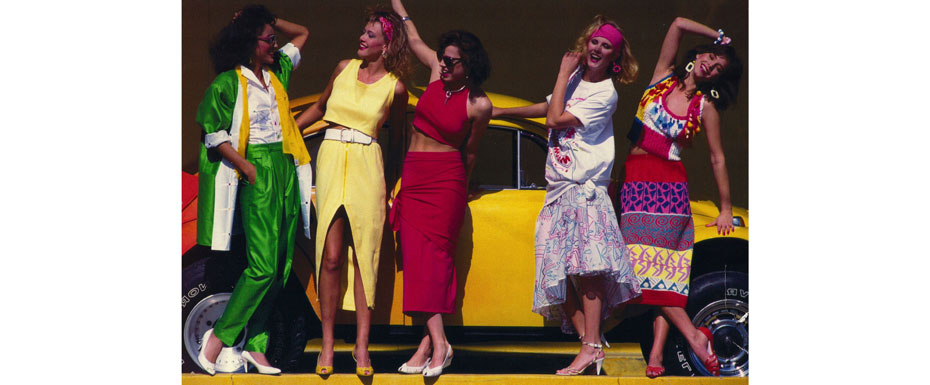
The main feature of this decade became excessiveness and catchy models. Aggressive sexuality, perfect athletic figure, romantic beauty – all these were the most typical images of the 80s.
The business style arose thanks to British Prime Minister Margaret Thatcher and the TV series “Dynasty,” which aired from 1981 to 1989. In 1988, the film “Business Girl” was released, where the actresses were wearing office-style clothes. Leather coats, turtlenecks, and pumps were used.
Dresses and jackets were fitted with wide belts with massive buckles.
The romantic, feminine style was associated with Princess Diana. Women of fashion were wearing pastel-colored guipure, silk, tulle, and lace clothes. Pencil skirts and puffy skirts, sheath dresses, blouses, belts tied at the waist – all these were attributes of the romantic style of the 80s.
The punk rock style remained afloat, but youth subcultures such as hip-hop (hooded sweatshirts, wide T-shirts, sneakers) and gothic (images of crosses, skulls, pentagrams, corsets, and platform boots) were added to it.
Fashion in the 1990s
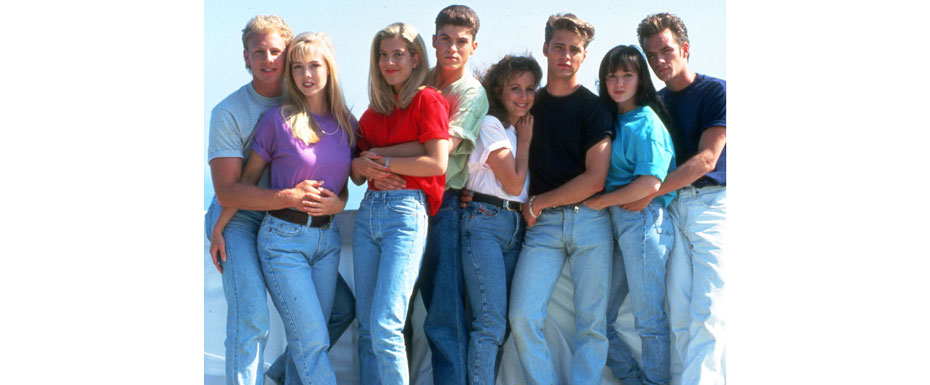
The 90s are a time of major changes in the world. Then the slogan “be yourself” was born, which became the slogan of the Calvin Klein company. Since individuality came into fashion, the emphasis shifted from clothing to appearance. Tanned skin and a slender figure became an essential detail. Fashion designers tried their best to emphasize the contours of the human body with the help of pressed skin, makeup, and plastic surgeries. Supermodels became style icons and role models.
Of course, there was also an alternative fashion – grunge founded by the Nirvana group. Their followers were wearing oversized sweaters and baggy men’s trousers. Shabby shirts, leather jackets, sneakers, or heavy boots were being worn too. As often happens, grunge didn’t go unnoticed by famous fashion designers: Vivienne Westwood, Marc Jacobs, Karl Lagerfeld presented the outfits of this style.
Grunge penetrated the cinema: Demi Moore in the cult film “Ghost” wore oversized jeans, elongated T-shirts and worn sneakers, and Julia Roberts in “Pretty Woman” chose short, ripped tops, heavy boots, and asymmetric skirts before her transformation.
All this was combined with minimalism (white tops and T-shirts, skinny jeans, a complete lack of accessories) and rave (acid colors, vinyl, plastic, neon, and shoes on a huge platform).
Fashion in the 2000s
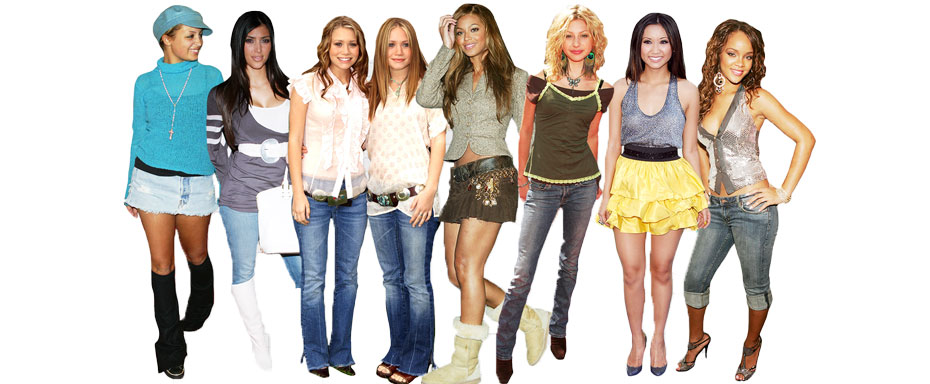
The rapid development of technology had a huge impact on fashion in the early 2000s. These are the days of MTV and favorite pop and hip-hop artists. Popular women’s outfits included mesh tops, pleated skirts, shiny shoes, and Britney Spears and Paris Hilton were trendsetters.
By the mid-2000s, low-rise jeans, hooded shirts, capri pants, dresses over jeans came into fashion. All this was combined with accessories such as thick straps, aviator sunglasses, rubber bracelets.
In the late 2000s, women’s crop tops were replaced by T-shirts. Ripped jeans, acid colors, light denim jeggings again came into fashion. Men’s fashion consisted of black leather jackets, flannel shirts, and V-neck sweaters. All this was paired with aviators, biker boots, Converse sneakers, Vans, or trainers.
Fashion in the 2010s

Globalization was taking place thanks to the spread of the Internet. The fashion that reigned throughout the world did not differ from one country to another. People could track new trends on websites or blogs from their favorite Internet bloggers, and many can afford to buy clothes from world-famous fashion designers.
Skinny jeans were still a must-have. Midi and maxi lengths are replacing miniskirts, and the most popular colors were bright neon shades. Bulky sweaters and checkered cotton shirts appear in large numbers on store shelves.
Another popular trend of the first half of the decade was the geometric motifs and attributes of Indian culture: earrings with feathers and bright ponchos.
An important feature of the 2010s is the close collaboration between renowned designers and hip-hop artists.
Since the mid-2010s, natural hairstyles have been in vogue: long and wavy hair. Inspired by the heroine Katniss Everdeen from the film “The Hunger Games,” the girls began to wear braids. And closer to the mid-2010s, short haircuts began to come into fashion. Lip glosses faded into the background. Girls began to use matte lipsticks massively.
Fashion in the 2020s
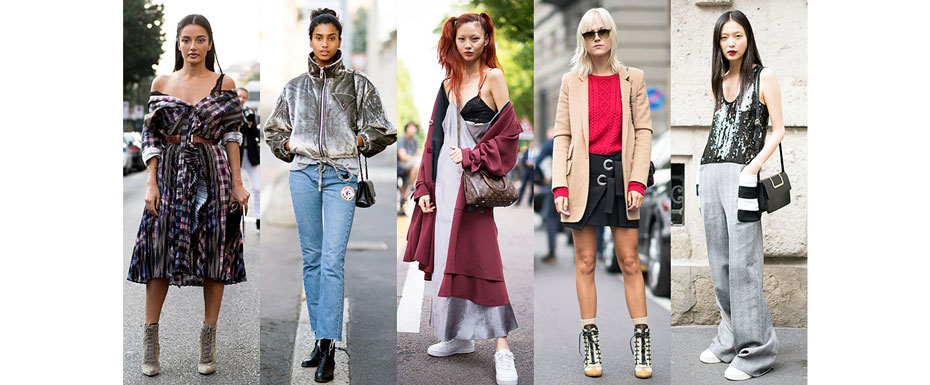
The 2020s have just arrived, but we can already identify some trends that set the new decade.
First, there is a lack of political indifference – young people no longer stand aside from political and business news as they used to; this also affects clothes. T-shirts and sweaters with political slogans came into fashion.
In 2019, people started talking en masse about ecology, which could not but affected fashion trends. Shopping bags, reusable grocery bags, eco-bottles, and clothing made from eco-friendly fabrics were used.
However, it is too early to talk about how we will remember this decade. It remains only to follow trends and come up with new images for yourself.


